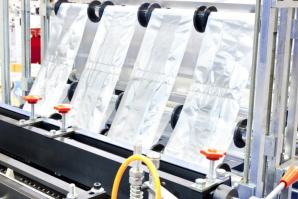
Chances are that the last time you opened a can of beans or tore into a chocolate bar, you tossed away the packaging without a second thought. Most of us do exactly the same, but perhaps we wouldn’t if we knew a little more about the history of innovation and invention which has led to food packaging as we know it today.
Issues including the need for food preservation, the desire for greater convenience and the upturn in commercial branding have all driven that innovation, and the following represents a very brief outline of how food packaging has indeed changed through the ages.
Breakthroughs in the 1800s
There’s evidence of humans using materials such as animal hides, cloth and glass to wrap and package food for many hundreds of years but the first real breakthroughs which led to food packaging as we would recognise today occurred in the 1800s.
Arguably the first of these, traces its origins back to a very unlikely source in the shape of Napoleon Bonaparte. Bonaparte had offered a prize of 12,000 francs to anyone who could invent a method to better preserve his armies’ supplies of food and it was in response to this that Frenchman Nicolas Appert began to tackle the problem. Eventually, he came up with the solution of placing foodstuffs into glass jars and then sealing them with cork and wax. Appert’s method eventually led to the now commonplace practice of canning foods and gave the Frenchman the epithet ‘the father of canning’.
On the other side of the Atlantic in the USA, another major development in food packaging occurred essentially by chance in 1890. A paperboard (cardboard) bag machine in a factory overseen by Robert Gair malfunctioned and led to the paperboard being folded and cut in one single motion. The malfunction caught Gair’s attention and made him realise that the machine could be more efficiently used to manufacture folding cartons and boxes. Gair seized upon this opportunity and began making such packaging items for major companies like Kellogg’s and the National Biscuit Company, thus changing the face of food packaging forever.
Further Developments in the 20th Century
If the breakthroughs in the 1800s were largely related to metal canning and cardboard cartons, there’s no doubt that the 20th century was the time when plastic packaging really took hold in earnest. Developments such as the invention of cellophane in 1908 and the production of the first commercial plastics injection moulding machine in 1926, for instance, allowed for plastic to be used far more widely in food packaging.
The use of plastic extended into many areas of packaging, including the plastic coating of cartons and boxes, and it was in the realm of such cartons that another major development occurred in 1951. In that year, the company Tetra Pak was founded as a subsidiary of Swedish food carton company Akerlund & Rausing. The company was entirely focussed on manufacturing a tetrahedron-shaped plastic coated paper carton invented by engineer Erik Wallenberg and such cartons for fruit juice, milk and other products are now ubiquitous the world over.
Arguably even more widespread than Tetra Pak cartons are ring pull drinks cans, and these also trace their beginnings to the mid-20th century. The first ‘pop-top’ aluminium can, in fact, was produced by Ermal Fraze in 1959 and went on to revolutionise the soft drinks industry through the 1960s and beyond.
More Modern Innovations
The shape, size and nature of food packaging has by no means stopped evolving and changing since the mid-20th century. New innovations and developments are continually invented and implemented to this day, but in general many of the more recent changes have been related to labelling and branding on packaging.
Laws and regulations regarding the display of ingredients, additives and health information on packaging, for instance, have been passed in a multitude of countries around the world. That doesn’t mean that brand new packaging innovations are entirely a thing of the past, however, as in the last five years or so research has been devoted to fascinating areas such as that of ‘intelligent packaging’ which changes colour as its contents freshness is lost.
Food packaging, then, looks set to remain a fluid and ever-evolving area that the vast majority of us never even give a second thought.